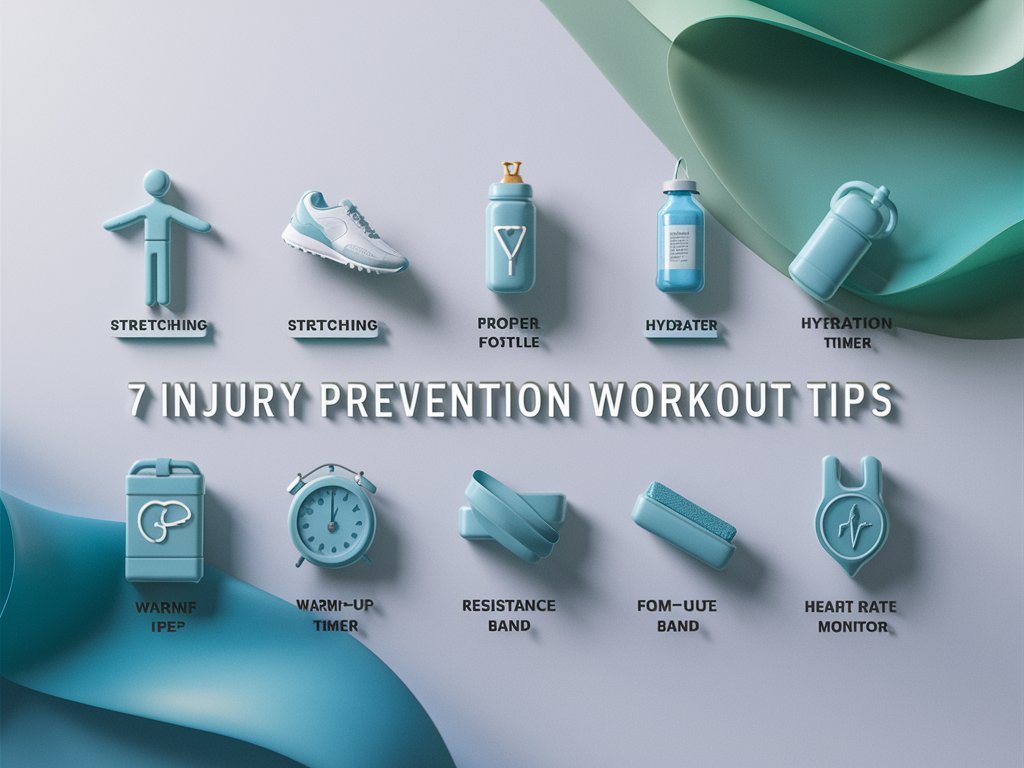Injuries are not just painful—they are progress killers. Whether you are lifting weights, running outdoors or following a home routine one wrong move can sideline you for weeks. That is why building a strong injury prevention workout is one of the smartest things you can do. This guide will walk you through simple yet powerful strategies to keep your body strong balanced and injury-free while still challenging your limits.
Why an Injury Prevention Workout Is Your Secret Weapon
Many people think fitness is about intensity but in reality longevity is the real goal. Without proper care, your joints wear down your posture collapses, and your performance suffers.
A proper injury prevention workout helps you:
Move with more control and confidence
Keep your muscles balanced and flexible
Improve coordination and body awareness
Minimize setbacks from overuse or strain
When you train to prevent injury, you are training for long-term strength and success.
Start Every Workout with Intentional Movement
Jumping straight into heavy lifts or sprints is a mistake. A smart warm-up prepares your muscles activates your nervous system and reduces tension.
Try this dynamic sequence:
Arm circles and shoulder rolls (30 seconds)
High knees or jumping jacks (1–2 minutes)
Bodyweight squats and lunges
Light resistance band movements
Warming up is a critical part of any injury prevention workout, giving your body the signal to perform safely.

Train Smarter with Movement-Based Core Work
Your core is more than just your abs. It is your center of stability—your powerhouse. A weak core can make your knees, lower back, and shoulders work harder than they should.
Best core moves for injury prevention:
Hollow body holds
Side planks with reach-through
Stability ball rollouts
Single-leg glute bridges
Including core-focused training in your plan ensures your injury prevention workout targets your foundation.
Mobility First, Always
Tight hips, stiff shoulders, and locked ankles are red flags. These limitations increase the chances of joint pain and pulled muscles. If you want to move better, you have to stretch smarter.
Try adding:
Deep squat holds (30–60 seconds)
Shoulder wall slides
World’s greatest stretch
Hip circles with a resistance band
You cannot build a strong body on top of restricted movement. Prioritize mobility daily.
Focus on Small Muscles That Keep You Stable
Big muscles look impressive, but tiny stabilizers keep you safe. These often ignored muscles—especially around the knees ankles and rotator cuffs—are crucial for balance and joint health.
Exercises to strengthen stabilizers:
Single-leg step-downs
External shoulder rotations with bands
Ankle mobility work on a wobble board
Clamshells for hip stability
A great injury prevention workout is built on these quiet heroes that keep your body aligned.
Perfect Technique Over Heavy Reps
There is no pride in lifting heavy with bad form. The fastest path to injury is ignoring technique for ego. Sloppy reps strain joints and ligaments far more than clean, controlled movements.
To maintain form:
Reduce weight when learning new movements
Use mirrors or film yourself for feedback
Perform slow and controlled reps
Train under supervision if possible
Form-first training equals injury-free progress. Make it a rule, not a suggestion.
Recover Like an Athlete
Recovery is not laziness—it is your growth phase. Overtraining or skipping rest days weakens your immune system and raises your risk of injury.
Smart recovery tips:
Schedule active rest days (light walking or stretching)
Get consistent, high-quality sleep
Use foam rollers or massage tools
Focus on hydration and nutrition
No injury prevention workout is complete without proper recovery. Your body performs best when it has the chance to rebuild.
Train One Side at a Time to Fix Imbalances
We all have a dominant side. Over time this can lead to muscle imbalances and awkward movement patterns. Fixing this requires unilateral exercises training each side of the body separately.
Effective unilateral movements:
Single-arm rows
Step-ups with dumbbells
One-arm farmer’s carry
Bulgarian split squats
Unilateral training reveals weaknesses before they become injuries, keeping your body evenly strong and mobile.
Final Thoughts: Train for Strength, Stay for Longevity
Chasing gains is exciting, but staying injury-free is how you actually achieve them. A well-designed injury prevention workout is your best defense against pain, frustration, and wasted time.
Instead of reacting to injuries after they happen, train in a way that prevents them from the start.
Take action now. Build a balanced routine, prioritize mobility and recovery, and pay attention to how your body moves. The stronger, safer version of yourself is just a smart workout away.

Click Hear for more tools :
What are the most common workout injuries, and how can I prevent them?
Common workout injuries include sprains strains joint pain and tendonitis These can often be prevented by incorporating warm ups using proper form, and gradually increasing intensity Injury prevention workouts focusing on mobility strength and balance are essential.
How often should I include injury prevention exercises in my routine?
Injury prevention exercises should be a part of every workout session Spend 5-10 minutes warming up before exercises and include mobility and core strengthening exercises 2-3 times per week to ensure overall muscle balance and flexibility.
Are stretching and mobility exercises enough to prevent injuries?
Stretching and mobility exercises are crucial but they should be combined with strength training and recovery techniques A comprehensive injury prevention workout includes flexibility core work joint stability and rest to build long-term resilience.
Can I still push myself to lift heavy weights while preventing injuries?
Yes, lifting heavy weights is possible without risking injury but it requires maintaining proper form and gradually progressing your strength. Always focus on technique rest adequately between sessions and incorporate injury prevention strategies like mobility work and core stability exercises.
What should I do if I feel pain during a workout?
If you experience pain during a workout stop immediately Continuing can worsen the injury. Rest ice compress and elevate (R.I.C.E) the injured area If the pain persists consult a healthcare professional to rule out serious injuries.

